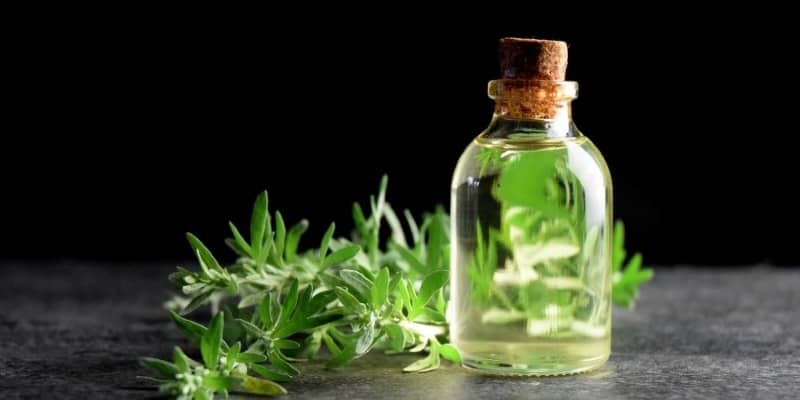Get ready to embark on a fascinating journey as we explore the origins of the legendary drink known as absinthe. This mystical elixir has captured the imagination of artists, writers, and connoisseurs alike.
From its controversial reputation to its rich history, we’ll uncover the secrets behind absinthe and delve into the intriguing stories that have surrounded this enigmatic beverage for centuries. Buckle up and get ready to be captivated by the world of absinthe and its encompassing allure.
The History of Absinthe
Early Medicinal Use
Absinthe, often referred to as “the Green Fairy,” has a rich and fascinating history that dates back centuries. Its origins can be traced to ancient times when it was used for medicinal purposes. In Egypt, around 1550 BC, wormwood was mixed with other herbs and spices to create a herbal infusion believed to treat various ailments. This is considered to be the earliest form of liqueur. It is a highly distilled alcoholic drink.
Creation of Absinthe
The modern form of absinthe is said to have been created in the late 18th century by a French doctor named Pierre Ordinaire. Seeking a more palatable way to administer wormwood as a cure for his patients, he developed a distilled spirit that combined wormwood, anise, and fennel. This marked the birth of what would become one of the most infamous and beloved beverages in history.
Rise in Popularity
Absinthe gained popularity in the early 19th century, particularly in France and Switzerland. Its unique flavor, derived from the combination of botanicals, quickly captivated the masses. The “heure verte,” or green hour, became a popular social tradition, with people gathering in cafes and bars to enjoy this elusive spirit. The reputation of liqueur as a drink associated with creativity and inspiration began to take hold.
Controversies and Bans
With its rising popularity came controversies and misconceptions. Absinthe was accused of causing hallucinations, madness, and even criminal behavior, leading to widespread moral panic. In the early 20th century, fueled by pressure from temperance movements, several countries, including Switzerland, France, and the United States, banned the production and sale of liqueur. This ban lasted for decades, leaving behind a legacy of mystery and intrigue.
Revival in the Modern Era
In the late 20th century, as the ban on liqueur began to lift, a revival of interest in this once-forbidden elixir emerged. Distillers sought to recreate the flavors and complexities of traditional liqueur by adhering to historical recipes and production methods. Today, liqueur is enjoyed by enthusiasts around the world, and its revival has brought the green spirit back into the limelight.
The Ingredients of Absinthe
The Holy Trinity: Wormwood, Anise, and Fennel
At the heart of every classic liqueur lies the holy trinity of ingredients: wormwood, anise, and fennel. Wormwood, the scientific name Artemisia absinthium, is a key component that gives alcoholic drink its distinctive bitterness. Anise, with its licorice-like flavor, provides sweetness and complexity. Fennel adds a subtle herbal note, enhancing the overall aromatic profile of the spirit. These three ingredients work together harmoniously to create the signature flavor for which absinthe is known.
Additional Botanicals
In addition to the holy trinity, absinthe often includes a variety of additional botanicals to add depth and complexity to its flavor profile. Common botanicals used in liqueur production include petite wormwood, lemon balm, hyssop, coriander, and angelica. Each botanical brings its own unique character, contributing to the overall balance and harmony of the final product.
The Role of Alcohol
Absinthe is a distilled spirit, and the alcohol content plays a crucial role in the drink’s overall flavor and experience. Traditionally, liqueur has an alcohol content ranging from 45% to 74% ABV (alcohol by volume), although variations exist. The high alcohol content helps to extract the flavors from the botanicals during the distillation process, resulting in a concentrated and aromatic spirit.
Distillation Process
The distillation process is a key step in creating absinthe. After macerating the botanicals in high-proof alcohol, the mixture is distilled in a traditional copper still. This intricate process allows for the extraction of essential oils and compounds from the botanicals, resulting in a flavorful and complex spirit. The distillation process is often repeated multiple times to achieve the desired level of purity and intensity.
Preparation and Serving
Traditional Absinthe Ritual
One of the unique aspects of enjoying absinthe is the traditional preparation and serving ritual that accompanies it. The ritual involves placing a sugar cube on a specially designed slotted spoon, which is then placed on top of an absinthe glass. Ice-cold water is slowly dripped over the sugar cube, gradually diluting the liqueur and releasing the aromatic oils. This slow and deliberate process allows for the appreciation of alcoholic drink’s complex flavors and the mesmerizing louche effect.
Tools: Absinthe Glasses, Spoons, and Fountains
To fully experience the traditional alcoholic drink ritual, the use of specific tools is essential. Absinthe glasses, often characterized by their tulip or pontarlier shape, are designed to showcase the louche effect and allow for the aroma to be captured. Slotted spoons, with their unique perforated design, hold the sugar cube in place while the water is dripped. Absinthe fountains, with their multiple spouts and ice reservoirs, provide a convenient and elegant way to slowly add water to the alcoholic drink.
The Louche Effect
A hallmark of liqueur is the mesmerizing louche effect. The unique perforated design of slotted spoons holds the sugar cube in place while dripping water. This phenomenon is a result of the oils in the absinthe emulsifying with the water, creating a captivating visual display. The louche effect not only enhances the aesthetic appeal of absinthe but also contributes to the overall sensory experience.
Modern Variations
While the traditional absinthe ritual remains highly revered by enthusiasts, modern variations of serving liqueur have also emerged. Some prefer to enjoy alcoholic drink neat, without any additional water or sugar. Others experiment with creating liqueur cocktails, incorporating this versatile spirit into contemporary mixology. These modern variations offer a fresh and innovative approach to experiencing absinthe, appealing to a wider range of palates and preferences.
Absinthe Myths and Misconceptions
Hallucinogenic Properties
One of the most enduring myths surrounding liqueur is its alleged hallucinogenic properties. It was believed that the presence of thujone, a compound found in wormwood, was responsible for inducing vivid visions and delirium. However, scientific research has debunked this myth, as the levels of thujone in absinthe were never high enough to cause hallucinations. The reputation of absinthe as a hallucinogenic drink can be attribute to sensationalism and exaggeration over the years.
Green Fairy Legends
The allure of absinthe and its association with creativity and inspiration led to the emergence of mythical tales, such as the legend of the Green Fairy. People believed that they would experience a visit from the Green Fairy, a mystical presence, when they partook in liqueur. The Green Fairy was thought to bestow them with artistic genius. While the Green Fairy remains a captivating symbol associated with absinthe, it is important to recognize that creativity arises from within oneself and not solely from the consumption of any particular drink.
Absinthe Madness and Addiction
During the height of absinthe’s popularity, there were reports of absinthe-induced madness and addiction, further fueling its controversial reputation. However, it is crucial to note that these reports were largely anecdotal and not based on scientific evidence. Excessive consumption of any alcoholic beverage can lead to negative effects, but absinthe itself does not possess addictive properties beyond those of any other alcoholic drink.
Thujone: The Truth

This image is property of images.pexels.com.
Famous Absinthe Drinkers and Artists
Popular Figures of the Belle Époque
The Belle Époque, a period of cultural and artistic flourishing in Europe, saw a surge in absinthe’s popularity. Many notable figures of the time were avid absinthe drinkers, including writers such as Oscar Wilde and Charles Baudelaire, as well as painters like Edgar Degas and Vincent van Gogh. Absinthe became synonymous with the bohemian lifestyle and the pursuit of artistic expression.
Famous Artists’ Connection to Absinthe
Absinthe holds a special place in the history of art, with several famous artists having a profound connection to the spirit. Henri de Toulouse-Lautrec, known for his iconic posters and depictions of Parisian nightlife, was an ardent absinthe enthusiast. The works of Édouard Manet, Pablo Picasso, and Henri Matisse also showcase absinthe as a recurring theme, capturing the allure and mystique of this captivating drink.
Absinthe in Literature and Art
Absinthe’s cultural impact extended beyond the realms of drinking and into the realm of literature and art. It served as a muse for many writers, inspiring literary works such as Ernest Hemingway’s “For Whom the Bell Tolls” and Charles Bukowski’s “Barfly.” In art, absinthe became a recurring theme, capturing the essence of the bohemian lifestyle and the transformative power of creativity.
Modern Influences
Even in modern times, absinthe continues to influence and inspire artists from various disciplines. Musicians, filmmakers, and visual artists draw upon the rich history and cultural significance of absinthe to create works that pay homage to this iconic drink. Absinthe’s legacy as a drink associated with creativity and artistic expression remains a source of inspiration for many.
Absinthe’s Cultural Impact
Symbolism and Bohemian Culture
Absinthe became a symbol of the bohemian culture that emerged during the late 19th and early 20th centuries. It represented a rebellious spirit, challenging societal norms and embracing individual freedom. The rituals surrounding absinthe consumption became a form of self-expression and a way to reject conformity. Liqueur embodied the spirit of artistic and intellectual movements, encouraging a sense of liberation and nonconformity.
Absinthe in the Café Society
Absinthe played a significant role in the cafe culture of the late 19th century. Parisian cafes, such as the famous Le Chat Noir, became gathering places for artists, writers, and intellectuals who would engage in lively debates and discussions fueled by absinthe. The vibrant atmosphere of these cafes fostered creativity and camaraderie, making absinthe an inseparable part of this intellectual movement.
Ban and Underground Culture
The ban on absinthe in the early 20th century drove the drink underground, resulting in the rise of clandestine absinthe production and consumption. Absinthe became synonymous with rebellion and defiance against oppressive regulations. Speakeasies and secret gatherings became the backdrop for absinthe enthusiasts to continue experiencing the forbidden elixir. This underground culture further enhanced the legend and allure of absinthe.
Absinthe’s Role in the French and Swiss Identity
Absinthe has played a significant role in the cultural identities of France and Switzerland. In France, people consider absinthe as part of the country’s artistic and literary heritage, a symbol of creative expression and intellectual freedom. In Switzerland, the historical roots of Val-de-Travers, a region known as the birthplace of absinthe, are deeply intertwine with absinthe. Absinthe celebrates itself as a cultural treasure that showcases the craftsmanship and traditions of the region.

Absinthe Today: Production and Regulations
Main Producers and Distilleries
Today, a variety of distilleries produce absinthe around the world, each with its own unique approach and interpretation of the spirit. Some renowned alcoholic drink producers include La Fée, Pernod Absinthe, and Kübler Absinthe. These distilleries strive to maintain the authenticity and craftsmanship of traditional alcoholic drink while also exploring innovative techniques and flavors.
Traditional vs. Modern Absinthe
The world of absinthe encompasses both traditional and modern expressions. Traditional alcoholic drink adheres to historical recipes and production methods, aiming to recreate the flavors and character of the alcoholic drink enjoyed during its heyday in the late 19th century. On the other hand, modern absinthe may experiment with alternative botanical compositions, flavors, and production techniques, offering a contemporary twist on the classic spirit.
Regulatory Measures and Limits
These guidelines dictate the maximum allowed levels of thujone, ensuring that absinthe produced today is within safe and acceptable limits. Regulatory bodies and organizations work closely with distilleries to ensure adherence to these regulations, promoting responsible production and consumption of alcoholic drink.
International Absinthe Market
Absinthe has experienced a steady growth in popularity and market demand in recent years. The once niche drink has become more widely available, with alcoholic drink enthusiasts and newcomers alike seeking out the diverse range of offerings. The international absinthe market showcases a multitude of brands, flavors, and styles, catering to a global audience. Whether enjoyed as a traditional ritual or in innovative cocktails, alcoholic drink continues to capture the imagination of drinkers worldwide.
Also Check: What Is Coffee Liqueur Exactly?
Absinthe in the Mixology World
Absinthe Cocktails: Classic and Contemporary
Absinthe’s versatility makes it a popular ingredient in a wide range of cocktails. Classic cocktails, such as the Sazerac and the Corpse Reviver No. 2, highlight the unique flavor profile of alcoholic drink while paying homage to their rich historical roots. Contemporary mixologists have also embraced alcoholic drink, incorporating it into innovative and creative concoctions that showcase its complexity and depth.
Influence on Cocktail Culture
Absinthe’s revival has had a significant impact on the world of mixology. Bartenders and cocktail enthusiasts have drawn inspiration from the history and flavors of alcoholic drink, resulting in the development of new techniques and flavor combinations. The resurgence of alcoholic drink has sparked a renewed interest in classic cocktails and the craft of mixology, with absinthe playing a central role in pushing the boundaries of flavor experimentation.
Absinthe Bars and Lounges
With the increasing popularity of absinthe, dedicated alcoholic drink bars and lounges have emerged in many cities around the world. These establishments provide a unique and immersive environment for alcoholic drink enthusiasts to explore the drink’s history, rituals, and flavor profiles. Absinthe bars often offer an extensive selection of absinthe varieties, allowing customers to embark on a journey of discovery and indulge in the green spirit.
Mixology Competitions and Trends
Absinthe’s resurgence has also given rise to mixology competitions and trends centered around this beloved spirit. Bartenders showcase their skills and creativity by incorporating alcoholic drink into their innovative cocktail creations. These competitions offer mixologists a platform to push the boundaries of what they can achieve with alcoholic drink, thereby leading to the development of new flavor combinations and trends within the industry.

This image is property of images.pexels.com.
Exploring Absinthe Tourism
Visiting Absinthe Distilleries
Absinthe tourism has gained traction, with enthusiasts and curious travelers seeking to explore the birthplace of alcoholic drink and experience the production process firsthand. Visiting absinthe distilleries offers a unique opportunity to witness the craftsmanship, history, and traditions behind this iconic spirit. Guided tours often include tastings, providing visitors with a comprehensive understanding of the rich heritage of alcoholic drink.
Absinthe Museums and Exhibitions
To delve deeper into the history and cultural significance of alcoholic drink, visiting alcoholic drink museums and exhibitions is a must. Dedicated spaces exhibit absinthe artifacts, artworks, and historical documents, offering a visual journey through its origins and societal impact. The museums offer a captivating insight into the complex history and legacy of absinthe, enlightening visitors about its enduring allure.
Absinthe Festivals and Events
Absinthe festivals and events have become popular attractions for both locals and tourists alike. These gatherings celebrate the spirit of alcoholic drink, featuring tastings, workshops, and performances that showcase the cultural heritage and traditions associated with alcoholic drink. From the annual Absinthiades in France to the Absinthiade in Switzerland, these festivals offer an immersive and festive environment for alcoholic drink enthusiasts to come together and appreciate their shared passion.
Absinthe Tastings and Tours
For those who prefer a more intimate and personalized experience, it tastings and tours provide a tailored exploration of the spirit. Guided tastings allow participants to sample a variety of alcoholic drink brands and styles, discovering the nuances and intricacies of each one. These tastings are often accompanied by educational sessions that delve into absinthe’s history, production, and serving traditions, providing a comprehensive understanding of the drink.
Conclusion
The history of absinthe is a winding tale filled with myths, controversies, and a vibrant cultural heritage. As the ban on alcoholic drink lifted, the green fairy emerged from the shadows, captivating enthusiasts around the world. It’s complex flavors, unique preparation rituals, and connections to art and culture make it a drink like no other.
The revival of absinthe in the modern era ensures that its legacy will continue to thrive. Distillers, mixologists, and enthusiasts all play a part in preserving the traditions and flavors of alcoholic drink while also pushing the boundaries of innovation. Whether enjoyed in traditional rituals or modern interpretations, absinthe’s allure continues to inspire and captivate individuals across the globe.


